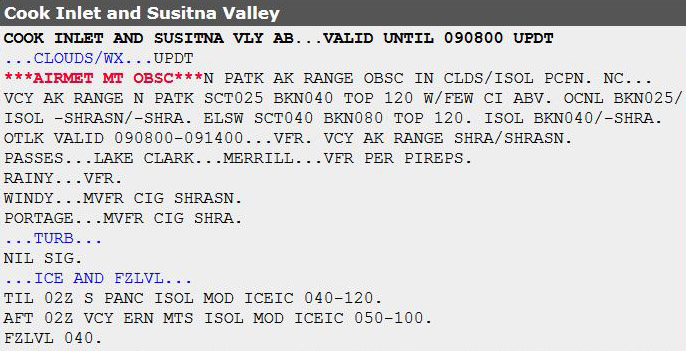NWS website accepts, distributes pilot reports
You have just landed after a flight marked by weather much more challenging than your preflight briefing led you to expect. You would have reported the conditions you began to encounter just as a workload-intensive arrival began—but with the moderate turbulence, cloud bases near approach minimums, and the rude surprise of seeing an unexpected trace of ice on the wings keeping you busy, flying the aircraft was all you could safely manage.
Good call. Now that you are warm and comfortable in the FBO, it’s still not too late to share the details of your just-completed flight with the other pilots out there. Do so by logging in to the electronic pilot report submission page on the National Weather Service’s Aviation Weather Center Digital Data Service (ADDS) website, where registered users can submit turbulence, icing, and other types of pireps. These pireps will be instantly displayed in graphical form and distributed nationwide.
The result is a web page with easier-to-use data entry forms; new help pages; automatic computation of the nearest location of a surface weather observation; and better security for making submissions, as well as other refinements.
Registration to submit pireps is a two-step process: Set up your account. Then contact the Aviation Weather Center, where it will be verified for security purposes that you are a pilot certificate holder. AWC will then activate the account for submitting pireps.
An FAA Safety Team message about the pirep submission website encourages pilots to submit pireps—online or by traditional methods such as radio and phone—when weather is better than forecast, as well as when it is worse, and it urges pilots not to be “overly concerned with strict format or phraseology.”
“The important thing is to relay the information so that other pilots can benefit from your observation,” it notes.

AOPA believes that if pilots sign up and submit pireps on the web page, it will be a step in the right direction for improving the pirep collection and distribution system, which was recently singled out for criticism in a National Transportation Safety Board special investigation.
The report pointed to AOPA Air Safety Institute educational resources as building blocks for improving the use and quality of the pirep system.
In Alaska, where weather reporting stations are often located at great distances, making pireps a vital source of real-time weather observations, AOPA is a participant in a pirep working group composed of industry stakeholders, the FAA, and NWS.
The availability of the pirep submission web page follows other recent and continuing weather-product changes such as the replacement of the text-based area forecast with graphical weather forecasting tools.
The phased replacement of the area forecast was an innovation requested by the FAA that AOPA strongly supports as pilots update the ways they gather weather data for flights.



